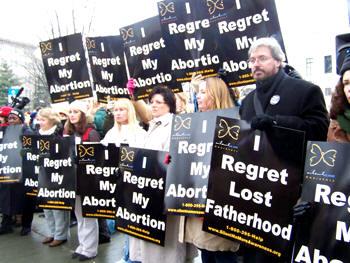 By Alan Bean
By Alan Bean
The abortion debate has polarized America. We are in the midst of a seismic shift on the gay rights front, but the battle lines on Roe v. Wade have hardly shifted. Most Americans are uncomfortable with the moral implications of abortion; most Americans feel that abortion should remain legal, and politicians on both sides of the ideological chasm have learned to exploit the issue for political gain. On the Red Letter Christians website, Kristin Day paints this unhappy picture:
With Roe, abortion became the ultimate wedge issue—where spin control, sound bites, and fear tactics trump good public policy and common sense. Want to disrupt the kind of bipartisan conversation we Americans need to have? Wave a coat hanger or a picture of an aborted fetus or claim there is an attack on women’s health. For groups on both sides of the abortion issue, abortion politics has become big business; the current destructive stalemate between the sides becomes their meal ticket. In this polarized environment, we have lost sight of the women in the cross-fire who are facing crisis pregnancies or wondering whether to bring a special-needs child into the world. Compassion has given way to one-upmanship. As a result, the women and their children whom both sides claim as their motivation are neglected by both sides.
Kristin Day is a pro-life Democrat.
On the other side of the debate, Jodi Jacobson at RH Reality Check sheds some light on the vexed issue of late-term abortions. It isn’t unusual for public figures to burnish their conservative credentials by demonizing doctors who perform this procedure. But as Jacobson points out:
Late-term abortions are very rare.About one percent of all abortions performed in the United States occur after 21 weeks. There are different definitions of what constitutes a “late term abortion,” but most definitions refer to abortions at or after 24 weeks or in the third trimester.
Moreover, she writes, most women who seek late-term abortions become aware that the fetus they are carrying has virtually now chance of surviving outside the womb. George Tiller, the Wichita KS doctor murdered by a deranged pro-life zealot, performed late-term abortions as an act of compassion.
If you listen to the voices of women served, you understand far more than what the media has told us about who chooses late-term abortion and why. For these women and their partners, Tiller was not “an abortionist” but a life-saver. He was a man who put himself in jeopardy to ensure that a woman would not have to lose her life to infection or complications in an already-doomed pregnancy. He was a doctor who ensured that women carrying a fetus with fatal or catastrophic abnormalities could make the decision–if they so chose–to spare themselves and their families the agony of watching a newborn that could not live endure countless operations and medical procedures in futile attempts to keep it “alive.”
The cost of politicizing the abortion debate has been a loss of clarity and proportion. A careful reading of these two views might help.
